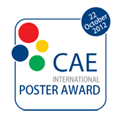
| |
EnginSoft - Conference Abstracts
EnginSoft International Conference 2009 |
Multi-Objective Optimization of Isoflux Antenna |
Ravanelli Rodolfo - Thales Alenia Space |
Abstract |
The Power Data Handling and Transmission (PDHT) antennas are basic payloads on low earth orbit (LEO) satellites. They are characterized by an antenna pattern shaped to compensate different gain attenuation relevant to satellite slant with respect to ground station (isoflux pattern). The challenging problem of the antenna design is the structure optimisation to meet more requirements as the gain definition on desired mask on extended coverage area (up to 64 degs in elevation and complete azimuth range), cross-polarisation discrimination, amplitude and phase ripples in band, return loss. The ThalesAleniaSpace first exemplary of a PDHT antenna was developed for RADARSAT and COSMO-SKY Med missions about ten years ago. The basic antenna architecture consists of a corrugated planar surface with cylindrical symmetry excited by quartz loaded launcher. The electromagnetic (e.m.) analysis of this geometry was possible by simple 2D Method of Moment modelling. The geometry configuration was optimized using simple minimization techniques based on quasi-Newton searching method. For recent satellite missions new and more stringent performances are requested for the antenna pattern, especially in terms of cross-polarisation discrimination and operative frequency bandwidth. This entails a redesign of the electromagnetic structure: to improve the electrical performance a series of slot across the corrugation walls have been inserted. The break on the geometrical symmetry requires now more complex 3D e.m. description with large increasing on computation time and memory resources. |
Back to index |



